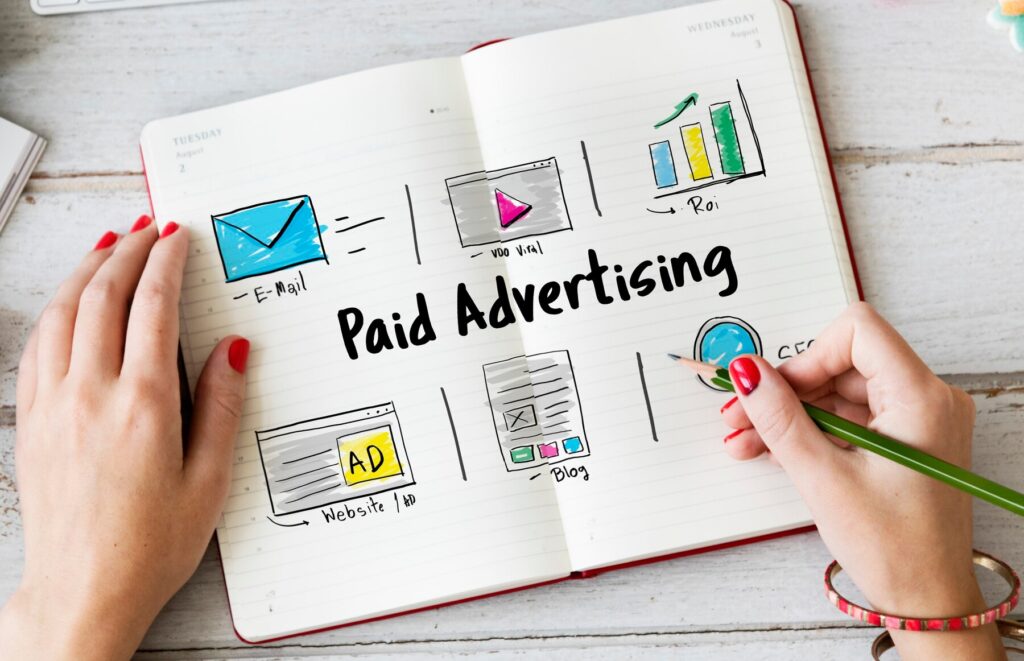Small business owners face unique challenges when competing with larger corporations for online visibility. Pay-per-click (PPC) advertising levels the playing field, allowing businesses with limited budgets to compete effectively in digital marketing. This comprehensive guide shares expert strategies and proven techniques to help small business owners master PPC advertising and achieve measurable results.
PPC advertising represents one of the most cost-effective digital marketing channels for small businesses. Unlike traditional advertising methods, you only pay when someone clicks on your ad, making every dollar count toward potential customer acquisition.
What Makes PPC Advertising Perfect for Small Businesses
Small business marketing thrives on precision and accountability. PPC campaigns provide immediate visibility in search results, allowing you to compete with established brands from day one. The beauty of pay-per-click advertising lies in its flexibility – you can start with modest budgets and scale based on performance.
Google Ads dominates the PPC landscape, capturing over 90% of search engine market share. When potential customers search for products or services you offer, your ads appear at the top of search results, driving qualified traffic to your website.
The measurable nature of PPC advertising gives small business owners complete transparency into their marketing investment. You can track every click, conversion, and dollar spent, enabling data-driven decisions that maximize return on investment.
How to Set Clear PPC Campaign Goals and Objectives
Successful PPC campaigns begin with well-defined objectives. Small business owners must identify specific, measurable goals before launching any advertising efforts. Consider whether you’re focusing on brand awareness, lead generation, online sales, or local foot traffic.

Revenue-focused goals work best for e-commerce businesses, while service-based companies often prioritize lead generation and phone calls. Local businesses should emphasize location-based objectives, such as store visits and local brand recognition.
Setting realistic expectations prevents disappointment and helps maintain consistent campaign optimization. New PPC campaigns typically require 30-60 days to gather sufficient data for meaningful performance analysis. Plan your budget and timeline accordingly.
Which PPC Platforms Deliver the Best Results for Small Businesses
Google Ads remains the most powerful PPC platform for small businesses, offering extensive reach and sophisticated targeting options. The platform’s auction-based system ensures fair competition, regardless of business size.
Microsoft Advertising (formerly Bing Ads) provides excellent value for small business marketing budgets. The platform typically offers lower cost-per-click rates and less competition, making it ideal for budget-conscious advertisers.
Facebook Ads excel at reaching specific demographics and interests, perfect for businesses targeting particular customer segments. The platform’s visual format works exceptionally well for retail, restaurants, and lifestyle brands.
LinkedIn Ads serve B2B small businesses effectively, though costs tend to be higher. The platform’s professional targeting capabilities justify the investment for businesses selling to other companies.
Essential Keyword Research Strategies for Small Business PPC
Effective keyword research forms the foundation of successful PPC advertising campaigns. Small businesses should focus on high-intent keywords that indicate strong purchase consideration. Long-tail keywords often provide better value than broad, competitive terms.
Use Google’s Keyword Planner to identify relevant search terms and estimate bid prices. Look for keywords with decent search volume but manageable competition levels. Commercial intent keywords like “buy,” “hire,” “near me,” and “best” typically convert better than informational searches.
Local businesses must incorporate location-based keywords into their PPC strategies. Terms like “plumber in [city]” or “dentist near me” capture high-intent local searches. Geographic modifiers help target customers within your service area while filtering out irrelevant traffic.
Competitor analysis reveals valuable keyword opportunities. Research what terms your competitors target and identify gaps in their strategies. Tools like SEMrush and Ahrefs provide insights into competitor PPC campaigns and keyword performance.
Ad Copy Best Practices That Drive Clicks and Conversions
Compelling ad copy differentiates your business from competitors and motivates users to click. Your headlines should directly address the searcher’s needs while highlighting your unique value proposition.
Include specific benefits rather than generic features in your ad descriptions. Instead of saying “quality service,” mention “24-hour response time” or “certified technicians.” Concrete details build trust and set proper expectations.
Call-to-action phrases significantly impact click-through rates and conversions. Use action-oriented language like “Get Free Quote,” “Book Now,” or “Call Today.” Match your CTA to your campaign objectives and landing page content.
Ad extensions enhance your PPC advertising by providing additional information and increasing ad real estate. Location extensions help local businesses, while callout extensions highlight key differentiators. Sitelink extensions direct users to specific pages on your website.
Smart Budget Management and Bidding Strategies
Small business owners must maximize every advertising dollar through strategic budget allocation. Start with conservative daily budgets and increase spending as you identify profitable campaigns and keywords.
Automated bidding strategies help optimize performance without constant manual adjustments. Target CPA (cost per acquisition) bidding works well when you have clear conversion goals and sufficient historical data.
Geographic bid adjustments allow you to increase or decrease bids based on location performance. Raise bids for high-converting areas while reducing spending in less profitable regions.
Time-based bid adjustments optimize ad scheduling based on when your customers are most active. Many small businesses find better performance during business hours or specific days of the week.
Landing Page Optimization for Maximum PPC Performance
Your landing page quality directly impacts PPC campaign success and costs. Google rewards relevant, user-friendly landing pages with higher quality scores and lower cost-per-click rates.

Ensure perfect alignment between your ad copy and landing page content. If your ad promises a specific offer or service, that information should be prominently displayed on the landing page.
Page loading speed affects both user experience and quality scores. Optimize images, minimize code, and choose reliable hosting to ensure fast loading times across all devices.
Mobile optimization is non-negotiable for modern PPC campaigns. Over 60% of searches occur on mobile devices, making responsive design essential for campaign success.
Conversion Tracking and Performance Measurement
Accurate conversion tracking enables data-driven optimization and ROI measurement. Install Google Analytics and Google Ads conversion tracking to monitor campaign performance effectively.
Define meaningful conversions based on your business objectives. E-commerce sites track sales, while service businesses might track form submissions, phone calls, or appointment bookings.
Attribution modeling helps understand the customer journey and allocate credit appropriately across touchpoints. First-click attribution shows what initially attracted customers, while last-click reveals what drove final conversions.
Regular performance analysis identifies optimization opportunities and budget reallocation needs. Weekly reviews allow quick adjustments, while monthly analysis provides deeper insights into campaign trends.
Advanced PPC Campaign Optimization Techniques
Negative keywords prevent your ads from showing for irrelevant searches, improving click-through rates and reducing wasted spend. Regularly review search terms reports to identify and add negative keywords.
Ad testing drives continuous improvement through systematic comparison of different ad variations. Test headlines, descriptions, and calls-to-action to identify top-performing combinations.
Audience targeting enhances campaign performance by reaching users more likely to convert. Remarketing lists target previous website visitors, while similar audiences expand reach to users with comparable characteristics.
Dayparting optimizes ad scheduling based on performance data. Analyze hourly and daily performance to identify peak conversion times and adjust budgets accordingly.
Local PPC Advertising Strategies for Small Businesses
Location-based targeting ensures your ads reach customers within your service area. Use radius targeting around your business location or target specific cities and regions.
Google My Business integration enhances local PPC performance by displaying business information directly in ads. Ensure your GMB profile is complete and optimized for local search visibility.
Local ad extensions provide valuable information like addresses, phone numbers, and business hours. These extensions increase ad visibility and make it easier for customers to contact or visit your business.
Competitor conquest strategies target users searching for your competitors’ brand names. This advanced tactic requires careful execution to avoid trademark issues while capturing competitor traffic.
Common PPC Mistakes Small Businesses Must Avoid
Inadequate keyword research leads to poor targeting and wasted advertising spend. Invest time in thorough keyword analysis before launching campaigns to ensure proper targeting.
Ignoring match types results in broad, irrelevant traffic that doesn’t convert. Use exact match for high-intent keywords and phrase match for broader targeting while maintaining relevance.
Poor landing page alignment causes high bounce rates and low quality scores. Ensure your landing pages directly relate to your ad copy and provide the information users expect.
Insufficient conversion tracking prevents accurate performance measurement and optimization. Implement comprehensive tracking from day one to make data-driven decisions.
Set-and-forget mentality limits campaign performance potential. PPC advertising requires ongoing optimization, monitoring, and adjustment to maintain effectiveness.
Future of PPC Advertising for Small Businesses
Artificial intelligence and machine learning continue transforming PPC advertising landscapes. Smart bidding strategies and automated ad optimization help small businesses compete more effectively with limited resources.
Voice search optimization becomes increasingly important as smart speakers and voice assistants gain popularity. Optimize for conversational keywords and question-based queries.
Visual search capabilities expand opportunities for product-based businesses. Prepare for image-based advertising and visual product discovery features.
Privacy changes and cookie restrictions require adaptation in tracking and targeting strategies. Focus on first-party data collection and contextual targeting methods.
Frequently Asked Questions
How much should small businesses spend on PPC advertising?
Start with 5-10% of your monthly revenue for PPC advertising. Begin with smaller daily budgets ($10-50) to test performance before scaling successful campaigns.
What’s the best PPC platform for local businesses?
Google Ads offers the best reach for local businesses, especially when combined with Google My Business optimization. Facebook Ads work well for restaurants and retail businesses targeting local customers.
How long does it take to see PPC results?
Initial traffic appears immediately after campaign activation. Meaningful performance data requires 2-4 weeks, while optimization typically shows results within 30-60 days.
Should small businesses use automated or manual bidding?
Start with manual bidding to understand your market, then transition to automated strategies like Target CPA once you have sufficient conversion data.
What’s a good click-through rate for small business PPC campaigns?
Average click-through rates vary by industry, but 2-5% is typical for Google Ads. Focus on improving relevance rather than chasing arbitrary benchmarks.
How often should I optimize my PPC campaigns?
Review performance weekly for quick adjustments and conduct thorough monthly analysis. Avoid making changes too frequently, as campaigns need time to stabilize.
What are negative keywords and why are they important?
Negative keywords prevent your ads from showing for irrelevant searches, improving efficiency and reducing wasted spend. Add negatives regularly based on search terms reports.
Can I run PPC campaigns without a website?
While possible using phone-only campaigns, landing pages significantly improve performance and provide better user experiences. Invest in a basic website for optimal results.
How do I know if my PPC campaigns are profitable?
Track conversions and calculate customer lifetime value. Ensure your cost per acquisition remains below your average customer value to maintain profitability.
What’s the difference between Google Ads and Facebook Ads?
Google Ads targets users actively searching for products/services, while Facebook Ads reach users based on interests and demographics. Both platforms serve different marketing objectives.
Should I hire a PPC agency or manage campaigns myself?
Small businesses with limited budgets can start with self-management using available resources and training. Consider professional help when monthly ad spend exceeds $2,000-3,000.
How important are ad extensions for small businesses?
Ad extensions significantly improve ad visibility and click-through rates at no additional cost. Use location, call, and sitelink extensions to maximize your ad real estate and performance.
